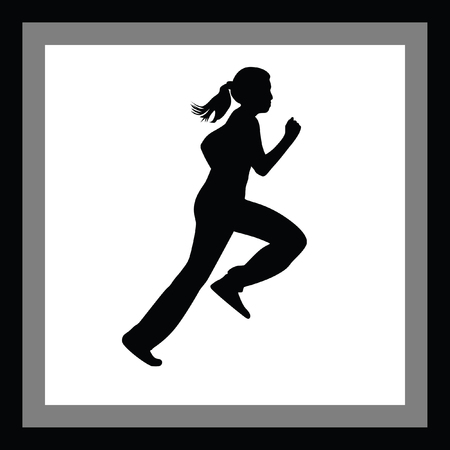Foundations of Manual Therapy in Upper Extremity Rehabilitation
Overview of Manual Therapy Principles
Manual therapy is a hands-on approach widely used by physical therapists and rehabilitation specialists to treat injuries of the upper extremity, which includes the shoulder, elbow, and wrist. The main goal is to reduce pain, improve mobility, and restore function by manipulating muscles, joints, and soft tissues. The techniques used can include joint mobilization, soft tissue massage, stretching, and nerve gliding.
Key Principles of Manual Therapy
| Principle | Description |
|---|---|
| Assessment-Based Treatment | Treatment plans are created after a thorough assessment of movement limitations and pain points. |
| Patient-Centered Approach | Techniques are tailored to each individuals needs, goals, and comfort level. |
| Functional Improvement | The focus is on improving real-life function, such as reaching overhead or gripping objects. |
| Gradual Progression | Manual therapy starts gently and progresses based on the patients response and tolerance. |
Evidence-Based Practice in Manual Therapy
In the United States, best practices for manual therapy rely heavily on research and clinical evidence. Therapists use proven methods that have been studied in clinical trials to ensure safe and effective care. This means combining the latest scientific findings with clinical expertise and each patient’s personal preferences to create the best treatment plan.
Examples of Evidence-Based Techniques for the Upper Extremity
- Shoulder: Joint mobilizations for frozen shoulder (adhesive capsulitis) have been shown to improve range of motion and decrease pain.
- Elbow: Soft tissue mobilization for tennis elbow (lateral epicondylitis) can help reduce pain and restore grip strength.
- Wrist: Carpal bone mobilizations are often used for carpal tunnel syndrome or post-fracture stiffness to increase flexibility and function.
Application in Treating Upper Extremity Injuries
The upper extremity is essential for daily activities like reaching, lifting, typing, or throwing. When injury or pain affects these areas, manual therapy offers a non-invasive way to speed up recovery. In practice across America, therapists carefully select techniques that match both the specific injury and the person’s lifestyle demands—whether it’s returning to work at a desk job or getting back on the baseball field.
2. Assessment Strategies for the Shoulder, Elbow, and Wrist
Effective manual therapy for upper extremity conditions starts with a solid assessment. To choose the right interventions, physical therapists in the U.S. focus on evaluating how well the shoulder, elbow, and wrist move and function in daily life. This section covers key evaluation techniques commonly used in American clinics to spot dysfunctions and movement issues.
Functional Movement Assessment
A functional movement assessment helps therapists understand how someone uses their arm during everyday tasks. By observing activities like reaching overhead, pushing up from a chair, or carrying groceries, therapists can see where movements break down or cause pain. Common tools include:
| Movement Task | What It Shows |
|---|---|
| Overhead Reach | Shoulder mobility and scapular control |
| Push-Up from Chair | Elbow stability and triceps strength |
| Carrying an Object | Grip strength and wrist alignment |
Tips for Functional Movement Assessment:
- Ask about pain or discomfort during each task.
- Watch for compensations—like shoulder hiking or wrist deviation.
- Compare both sides to spot differences.
Palpation Skills
Palpation means using your hands to feel tissues and joints. Skilled palpation helps therapists detect swelling, tenderness, muscle tightness, or abnormal joint movement. In the U.S., this hands-on approach is a standard part of orthopedic exams.
| Anatomical Area | What to Palpate For |
|---|---|
| Shoulder (Rotator Cuff) | Tenderness or muscle trigger points |
| Elbow (Lateral Epicondyle) | Pain indicating possible tennis elbow |
| Wrist (Carpal Tunnel) | Numbness, tingling, or swelling around median nerve area |
Palpation Tips:
- Start gently and increase pressure as needed.
- Check for warmth or swelling—signs of inflammation.
- Engage patients by asking them to describe sensations during palpation.
Combining Assessment Techniques for Better Results
The best manual therapists use both movement assessments and palpation skills together. For example, if a patient struggles with overhead reach, palpating the rotator cuff muscles might reveal tightness that limits motion. Using these strategies side by side gives a clearer picture of what’s going on and guides targeted therapy choices.

3. Manual Therapy Techniques for the Shoulder
Understanding Common Shoulder Conditions
The shoulder is a complex joint that’s prone to injuries like rotator cuff strains, adhesive capsulitis (frozen shoulder), impingement syndrome, and general stiffness. Effective manual therapy can help restore function, reduce pain, and improve mobility for these conditions.
Joint Mobilizations
Joint mobilization involves gently moving the shoulder joint to increase range of motion and decrease pain. These techniques are often used when the joint feels stiff or restricted. Here’s a quick guide to common mobilization grades:
| Mobilization Grade | Purpose | Example Use |
|---|---|---|
| Grade I & II | Pain relief, gentle movement | Early frozen shoulder, acute pain |
| Grade III & IV | Increase mobility, stretch capsule | Chronic stiffness, limited ROM |
Typical shoulder mobilizations include:
- Posterior Glide: Helps with flexion and internal rotation.
- Inferior Glide: Useful for overhead reaching and abduction.
- Lateral Distraction: Reduces overall joint compression and pain.
Soft Tissue Techniques
Addressing tight or overworked muscles around the shoulder can relieve discomfort and improve movement. Popular soft tissue techniques include:
- Myofascial Release: Gentle pressure applied to the fascia to decrease restrictions in muscles like the upper trapezius or pectoralis major.
- Trigger Point Therapy: Targeted pressure on specific “knots” in muscles such as the rotator cuff group or deltoids.
- Cross-Fiber Friction Massage: Breaks up scar tissue, especially helpful post-injury or after surgery.
Neuromuscular Facilitation for Shoulder Function
This approach helps retrain how your shoulder muscles fire and work together. Some commonly used techniques include:
- Proprioceptive Neuromuscular Facilitation (PNF): Uses resisted movements in specific patterns to activate weak or inhibited muscles, often combined with stretching for better flexibility and strength.
- Taping and Cues: Taping can provide feedback to help you hold your shoulder in proper alignment during activities like reaching or lifting.
- Tactile Stimulation: Light touch cues to encourage correct muscle activation during exercises or daily tasks.
Practical Tips for Home Practice
- If your therapist recommends self-mobilization, use a towel or band for gentle stretches—never force any movement that causes sharp pain.
- Use ice packs after soft tissue work if there’s soreness.
- Add functional tasks like reaching into cabinets or light resistance bands to gradually build strength while practicing new movement patterns.
4. Manual Therapy Techniques for the Elbow and Wrist
Understanding Hands-On Approaches
Manual therapy is a cornerstone in managing elbow and wrist disorders, helping improve movement, decrease pain, and speed up recovery. These hands-on techniques are especially helpful for conditions like tennis elbow, golfer’s elbow, wrist sprains, and post-surgical stiffness. The goal is to restore function and get patients back to their daily activities as soon as possible.
Common Manual Therapy Techniques for the Elbow
| Technique | Description | When to Use |
|---|---|---|
| Lateral Glide Mobilization | Gentle sideways movement of the elbow joint to relieve pain and improve range of motion. | Tennis elbow, stiffness after immobilization |
| Medial-Lateral Oscillations | Rhythmic movements applied to the joint surfaces for reducing discomfort and increasing mobility. | General joint stiffness, early rehab phase |
| Soft Tissue Mobilization | Massage techniques targeting muscles and tendons around the elbow to decrease tension. | Muscle tightness, overuse injuries |
Manual Therapy Techniques for the Wrist
| Technique | Description | When to Use |
|---|---|---|
| Dorsal-Volnar Glides | Movements that help restore flexion and extension by gliding the wrist bones back and forth. | Wrist sprains, limited motion after casting |
| Carpal Bone Mobilization | Focused mobilizations on individual carpal bones to improve alignment and reduce pain. | Carpal tunnel syndrome, post-injury stiffness |
| Stretching and Traction Techniques | Sustained stretches or gentle pulling to increase joint space and flexibility. | Tightness from repetitive use or post-operative care |
Guidelines for Progressive Loading After Manual Therapy
The success of manual therapy depends not just on passive treatments but also on gradually reintroducing movement and resistance. Here’s a simple approach often used in American physical therapy clinics:
| Phase | Main Focus | Example Activities/Exercises |
|---|---|---|
| Pain Relief & Mobility Restoration (Week 1-2) | Pain control, gentle movement, swelling reduction. | Pendulum swings, gentle stretching, ice packs as needed. |
| Early Strengthening (Week 2-4) | Light resistance training while maintaining mobility gains. | Theraband exercises, grip strengthening with putty or soft ball. |
| Functional Loading (Week 4+) | More dynamic movements; focus on returning to daily tasks or sports. | Lifting light objects, pushing/pulling doors, sport-specific drills. |
Cultural Note: American Approach to Patient Empowerment
In American rehab culture, therapists encourage patients to take an active role in their recovery. Patients are often given home exercise programs early on. Communication between therapists and patients is open—questions are welcomed and goals are set together. This patient-centered approach helps build confidence while ensuring safety throughout the rehab process.
5. Case-Based Management and Clinical Decision-Making
Integrating Manual Therapy in Real-World Scenarios
Manual therapy for the upper extremity—shoulder, elbow, and wrist—requires more than just hands-on techniques. It’s about understanding each patient’s unique story, their daily activities, and what matters to them. In the U.S., where people value independence and active lifestyles, a tailored approach that fits their goals is essential.
Patient-Centered Care in Practice
Let’s look at how manual therapy can be applied using case-based management. This means making decisions based on real-life examples, always keeping the patient at the center of care. Below are three common cases you might see in a typical American outpatient clinic:
| Case | Main Issue | Manual Therapy Focus | Patient Goals | Cultural Considerations |
|---|---|---|---|---|
| Rotator Cuff Tendinopathy (Shoulder) | Pain with overhead reach (e.g., work tasks or sports) | Soft tissue mobilization, joint glides, scapular stabilization | Return to work, lifting grandkids, playing tennis | Respecting return-to-work timelines and family roles |
| Lateral Epicondylitis (Elbow) | Pain with gripping or computer use | Cross-friction massage, radial head mobilization | Typing comfortably, golfing with friends | Understanding hobbies and job demands |
| Carpal Tunnel Syndrome (Wrist) | Numbness/tingling with driving or phone use | Neural mobilization, carpal bone mobilization | Driving safely, caring for children, using mobile devices | Adapting strategies for diverse lifestyles (e.g., single parents) |
Clinical Reasoning: Step-by-Step Approach
- Assessment: Start by listening—ask about daily life, work, hobbies, and family roles. Use hands-on assessment to identify movement restrictions or tenderness.
- Treatment Planning: Choose manual therapy techniques that best fit the individual’s needs. For example, someone who types all day may benefit from different approaches than an athlete.
- Cultural Awareness: Be sensitive to background and preferences. Some patients may prefer less physical touch or have beliefs about pain and healing that affect their choices.
- Education: Teach patients simple home exercises and explain why manual therapy helps. Use plain language and connect it to their goals (“This will help you get back to gardening,” or “You’ll be able to hold your baby more comfortably.”)
- Reassessment: Regularly check progress. Adjust your plan if needed—maybe add new techniques or focus on a different area as recovery progresses.
Sample Communication Strategies for Patient Engagement
| Saying This… | Helps Because… |
|---|---|
| “What are your main goals for therapy?” | Makes care personalized; shows respect for patient priorities. |
| “How does this pain affect your everyday life?” | Uncovers functional problems important to the patient. |
| “Would you like me to explain each step as we go?” | Eases anxiety; builds trust; respects cultural comfort levels. |
Strategies for Optimizing Outcomes in Diverse Settings
- Create a collaborative plan: Involve patients in decision-making—Americans often expect to be partners in their healthcare.
- Acknowledge barriers: Ask about transportation issues, childcare needs, or insurance limits that could affect follow-up.
- Diversify interventions: Combine manual therapy with stretching, strengthening, and ergonomic advice relevant to daily American life (like safe lifting at work or posture tips for office workers).
The Value of Flexibility in Manual Therapy Management
No two patients are alike. By using real-world cases and considering the whole person—not just the injury—you create a supportive environment where patients feel understood and motivated. This holistic approach leads to better engagement and improved results for shoulder, elbow, and wrist rehabilitation across all walks of American life.


